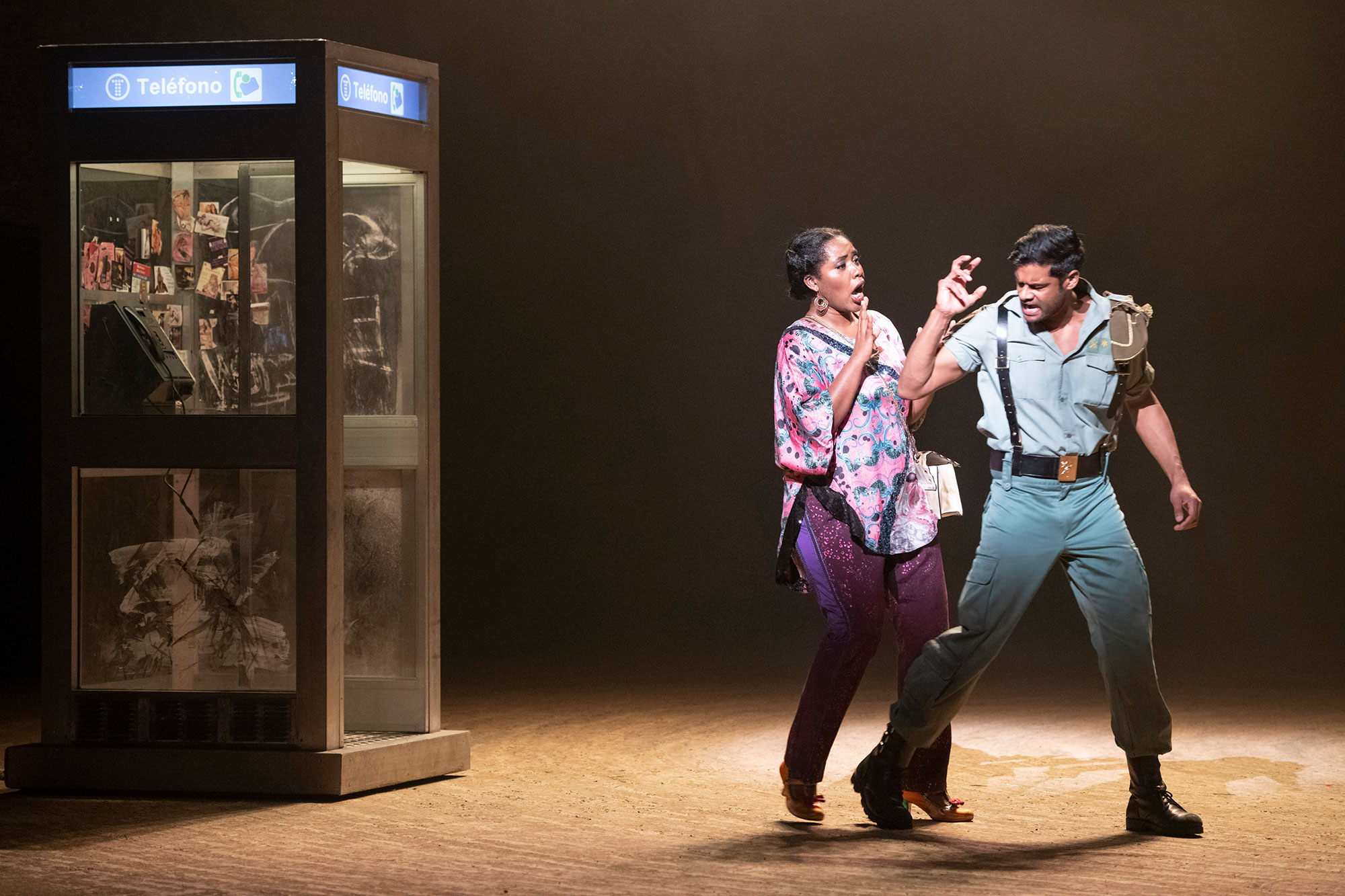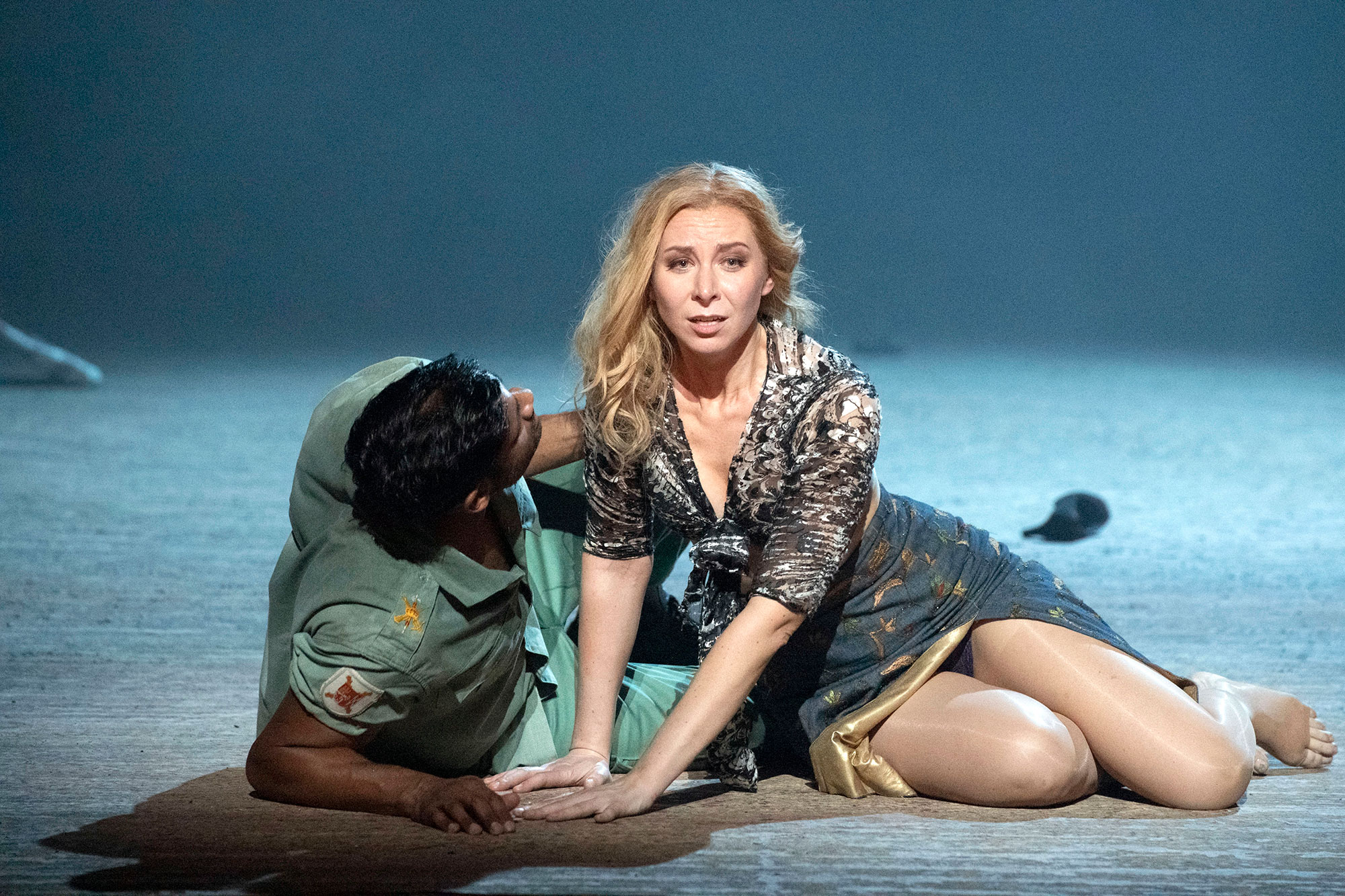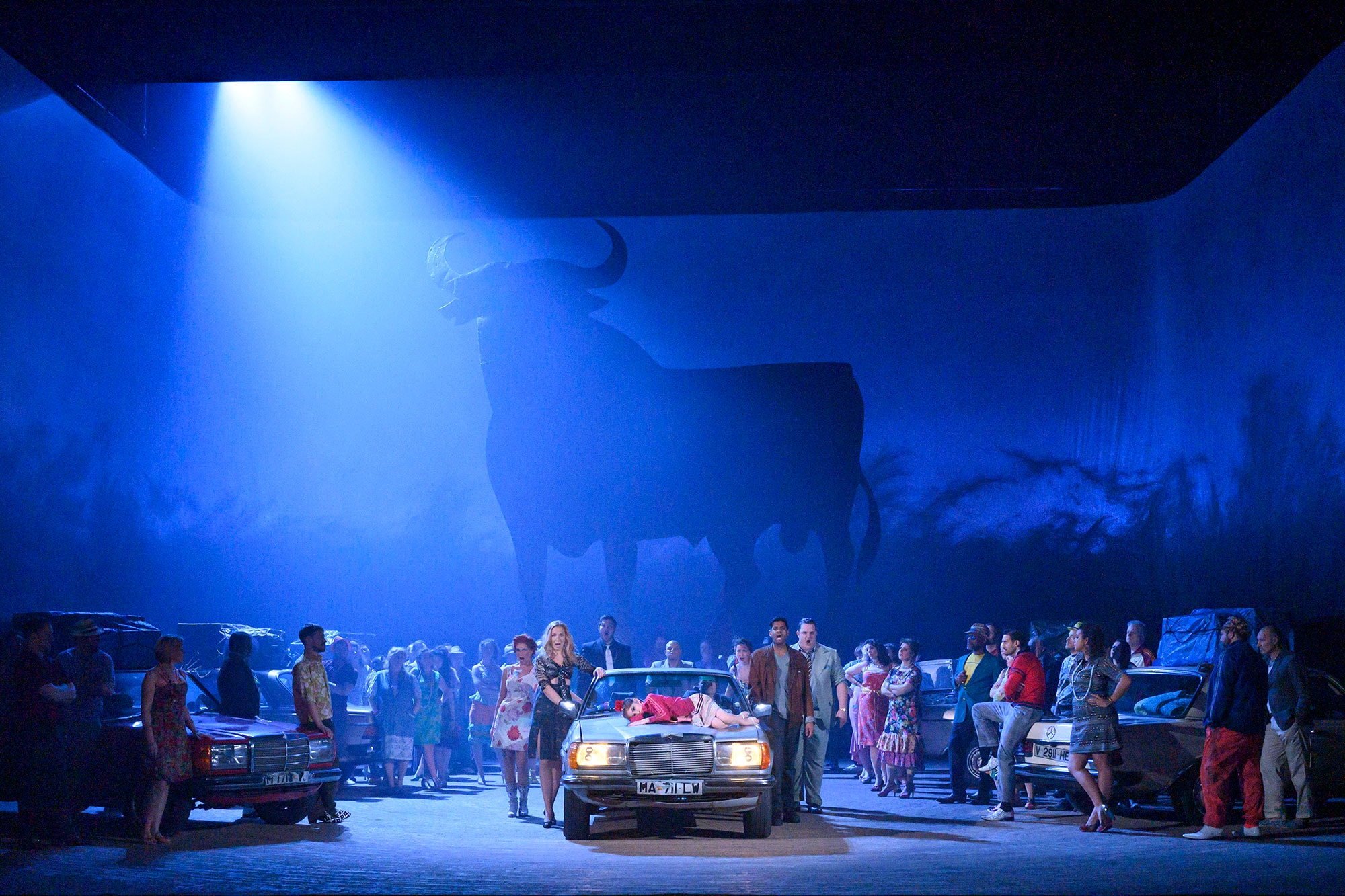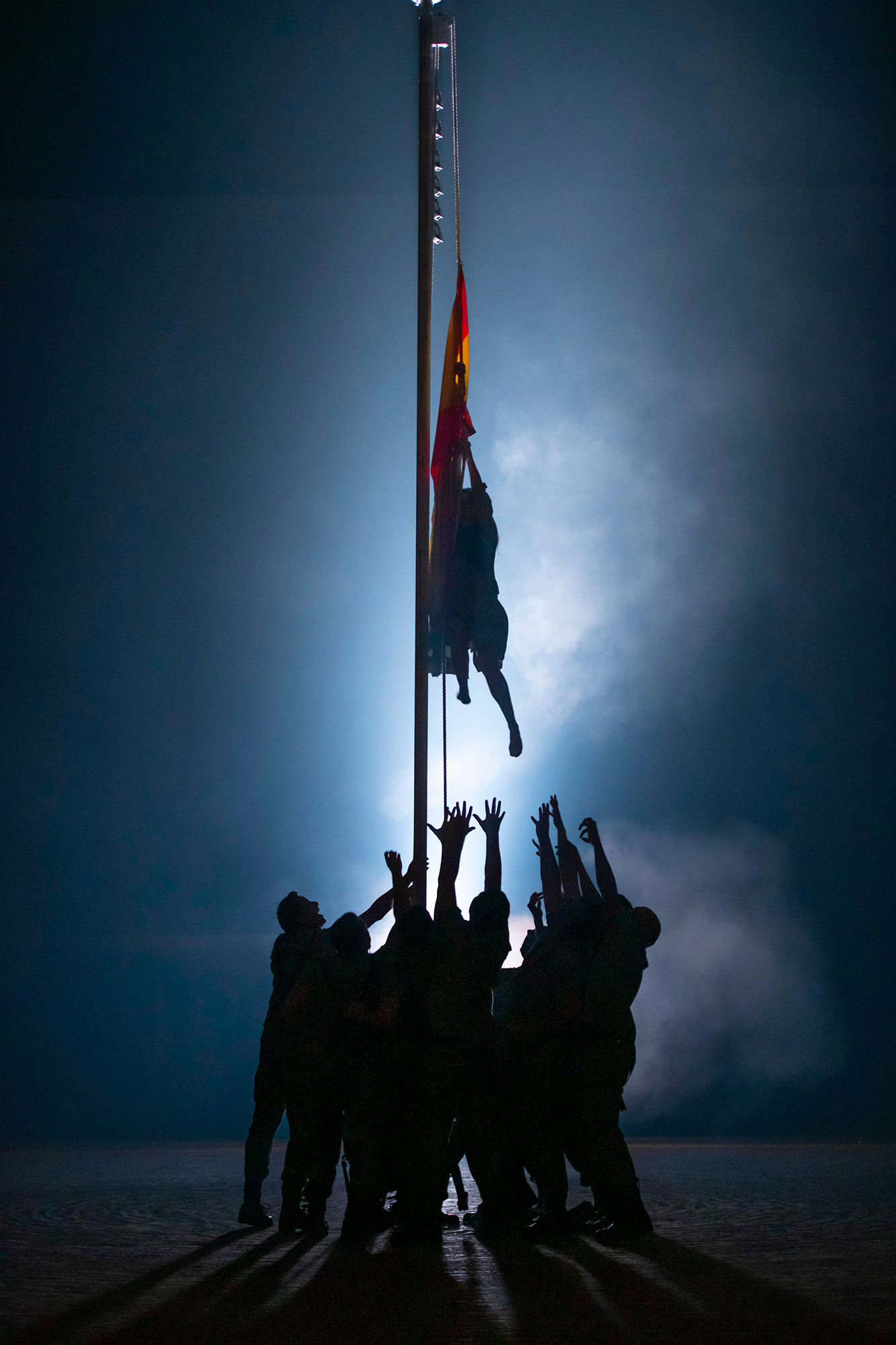An Introduction to Carmen
A story of a woman consumed by passion, and the men who let their emotions overcome them – Bizet’s Carmen is one of the first titles to come to mind when we think of opera, and with good reason. If you love a romantic story with a twist, we think you’ll love Carmen.
Here’s everything you need to know about the ENO’s production of Bizet’s Carmen.
Georges Bizet’s greatest opera
Video
Perhaps French composer Bizet’s best known work, Carmen has eclipsed the composer’s other operatic works. Thanks to its depiction of love, obsession and jealousy, Carmen has become a fixture in opera houses’ repertoire worldwide, and become one of the most popular operas ever written.
Army Corporal Don José finds himself unable to resist cigarette worker and femme fatale Carmen’s charm, even when he is supposed to be guarding her prison cell. The tumultuous affair that begins between the pair comes to an abrupt halt when Carmen turns her attention to bullfighter Escamillo. Don José’s love for the femme fatale soon turns to jealousy and violence.
Admired throughout Europe, Calixto Bieito‘s staging of Carmen transports from the original nineteenth century Seville to the tail end of Franco’s regime in the 1970s, a period in which women’s rights were called into question.
Bieito is Artistic Director of Teatro Arriaga in Bilbao and regularly electrifies audiences and challenges critics with his radically reinvented productions of operas.
Exploring the complex relationships between the sexes in the period, Bieito’s production effortlessly modernises the action while sacrificing none of the fiery drama of Carmen’s plight.
Full to the brim with tunes you’ll recognise
Video
Say what you will about Bizet, but his ability to write catchy tunes is second to none. Possibly the most famous are Escamillo’s Act 2 ‘Toreador Song’ and Carmen’s ‘Habanera’. Bizet sought to add Spanish inflections to his score, so used Spanish Folksongs and Flamenco influences to pin the Iberian feel to the opera beyond its set and costuming.
The ‘Toreador Song’ has been a pop culture favourite for some time, having been covered by opera singer Samuel Ramey on Sesame Street, as well as in The Simpsons, where it is heard when the family pay a visit to see Carmen at the opera.
The ‘Habanera’, in which Carmen sings about love being a rebellious bird that cannot be tamed, was famously covered by Beyoncé. More recently, it featured in the Queen biopic Bohemian Rhapsody and in the Disney Pixar movie Up.
It’s based on a novella by Prosper Mérimée
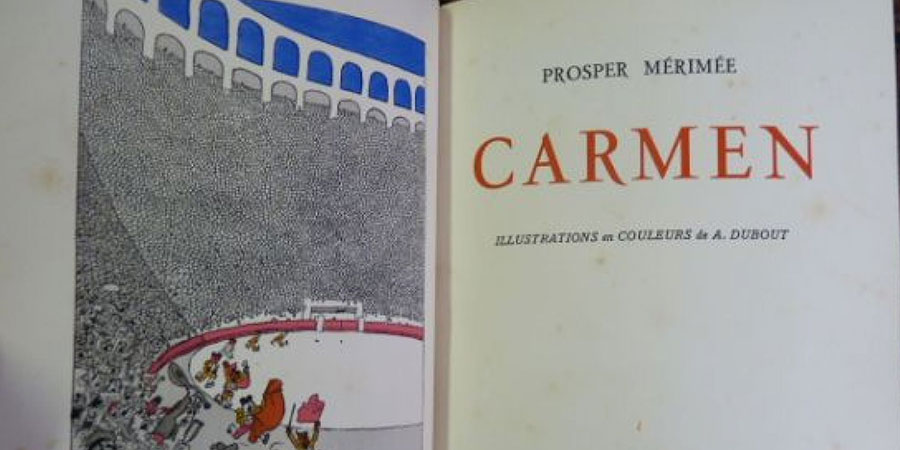
Having impressed the Opéra-Comique’s theatre director, Camille du Locle, with his one-act opera, Djamileh, Bizet was invited to collaborate on a new full-length work in 1872. Bizet suggested to librettists Henri Meilhac and Ludovic Halevy (who had previously worked with Jacques Offenbach) an adaptation of Mérimée’s 1845 novella, Carmen.
In adapting the novella for his opera, Bizet added a number of characters, notably, the addition of the female singing roles Micaëla, Frasquita, and Mercédès. Bizet also chose to omit Carmen’s husband from the opera, and changed Lucas’ name to Escamillo.
Discover more operas based on books here.
The 1875 premiere didn’t reflect its current popularity

Although the opera had more performances during its first run than any other of Bizet’s operas, the composer was seriously affected by the bad criticism it initially received upon its premiere on 3 March 1875 in Paris.
Audiences at the Opéra-Comique, where the production premiered, were said to be shocked at this tale of obsession and violence, having been used to somewhat lighter operas. Despite this, Carmen was still running some three months later when Bizet died, aged just 36.
Soon after the composer’s death, the opera premiered in Vienna as a great success. It subsequently travelled around the globe and remains one of the most staged operas to this day.




